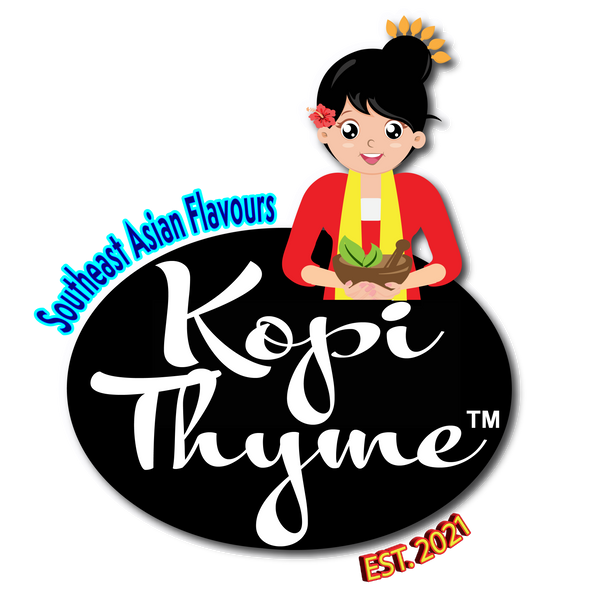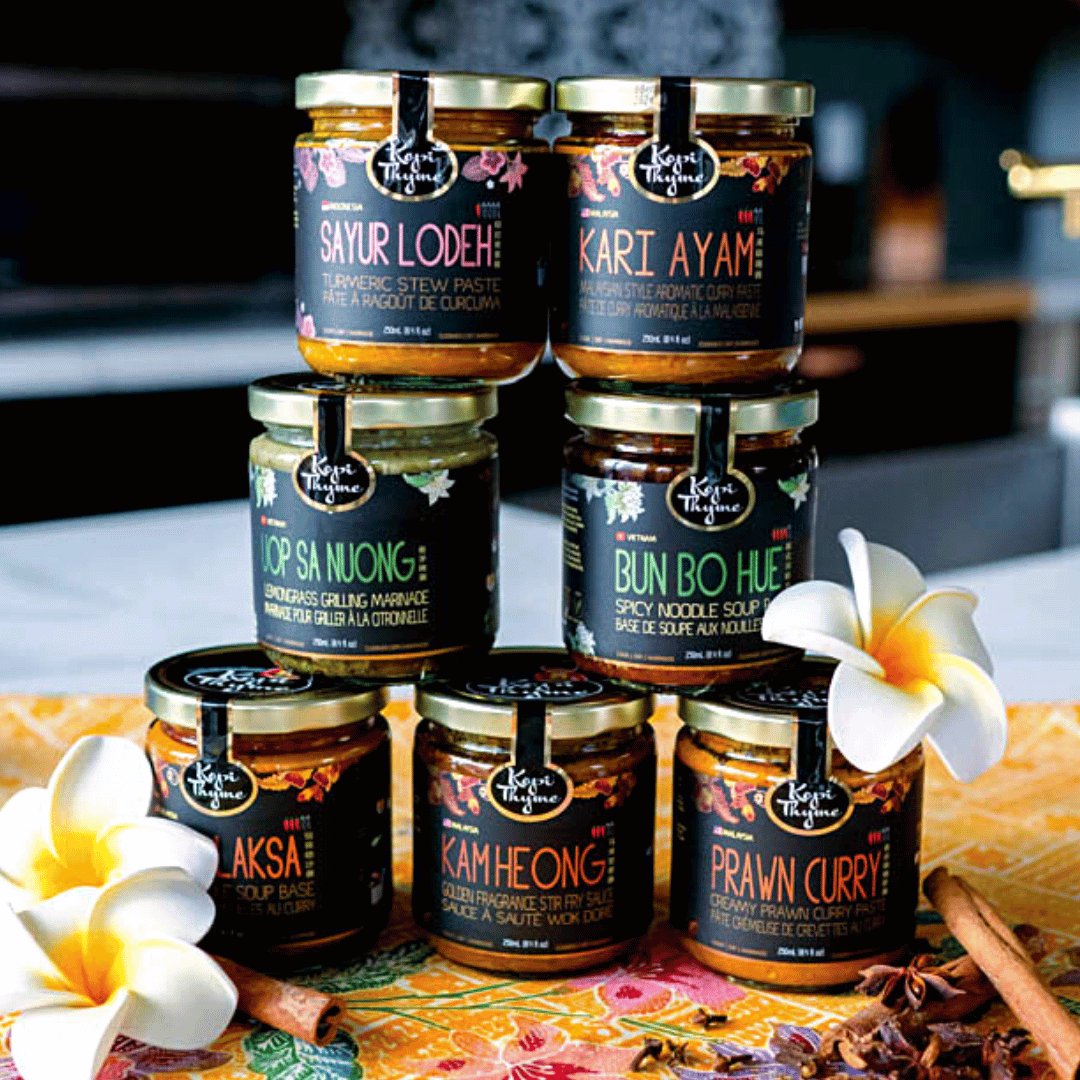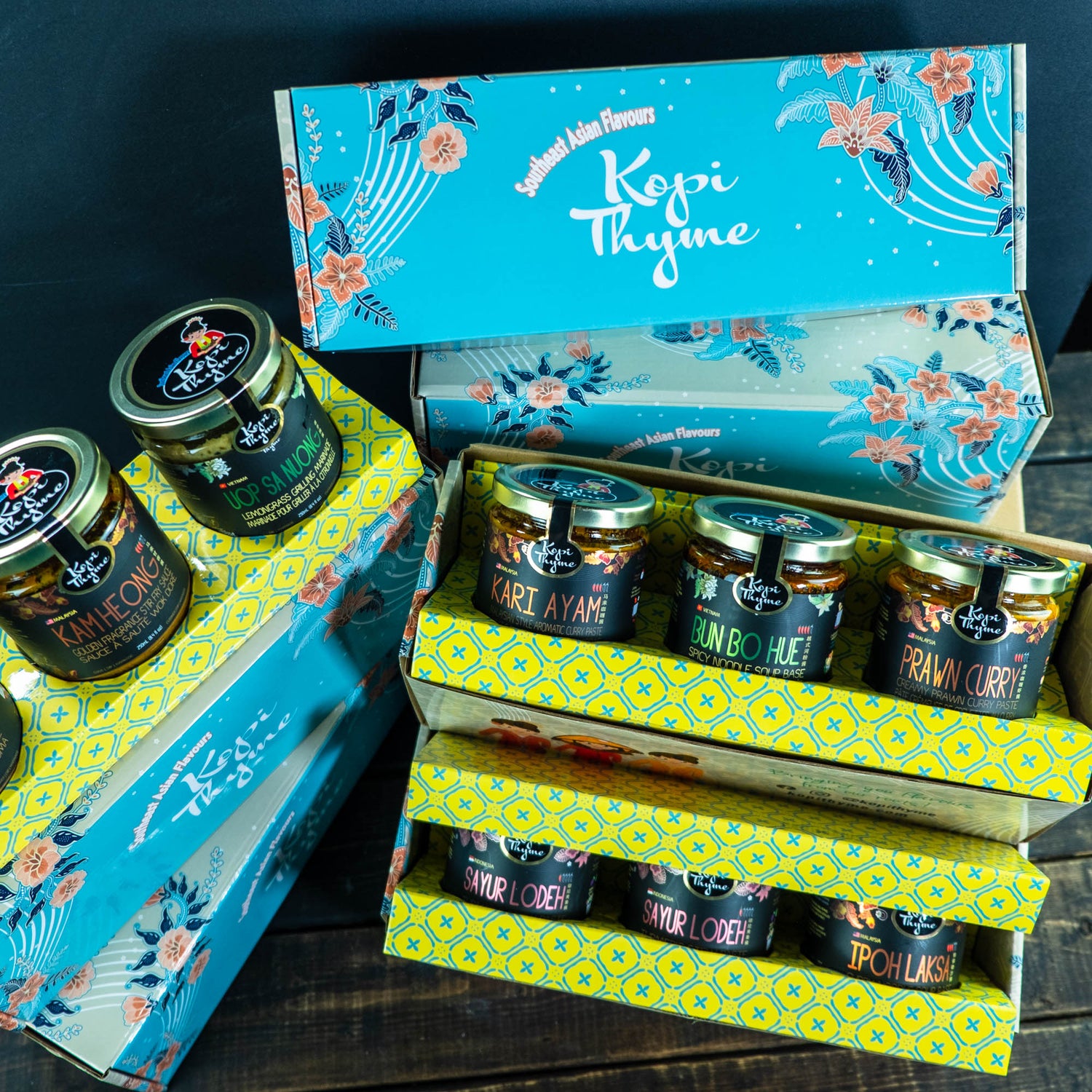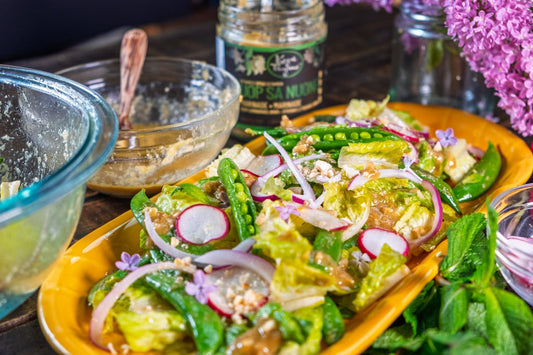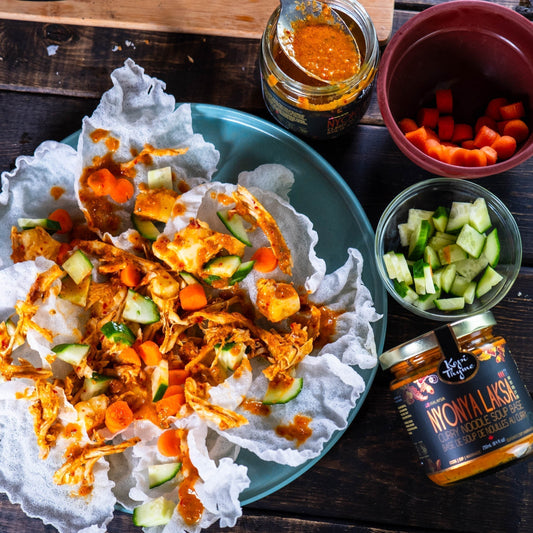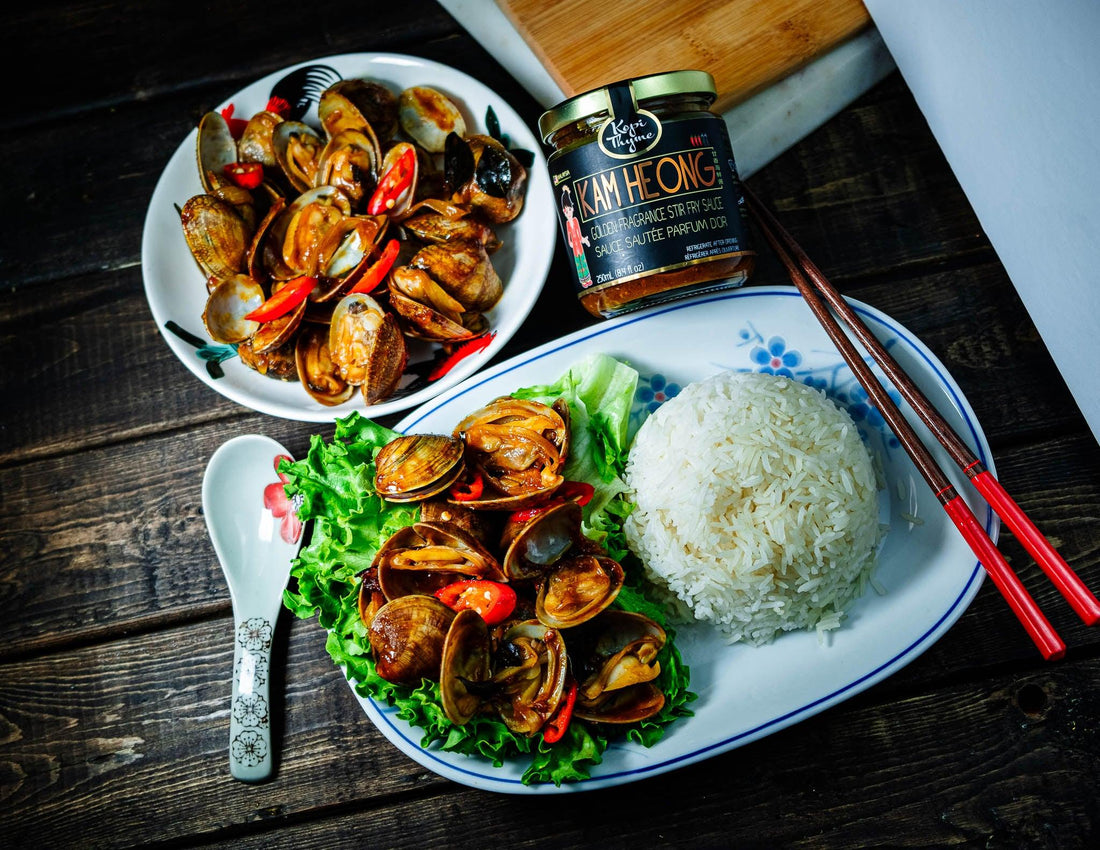
Share
How to Kopi Thyme
The History of Kam Heong: A Signature Malaysian Fusion Stir-Fry
Kam Heong (金香), which translates to "golden fragrance" in Cantonese, is a beloved stir-fry dish that has become a signature of Malaysian cuisine. The name itself reflects the aromatic essence that defines this dish, the "golden" fragrance imparted by the stir-frying technique used to create it. This method of cooking infuses the ingredients with intense flavours and a mouth-watering fragrance, making Kam Heong one of the most popular dishes in Malaysia’s vibrant food culture.
A Fusion of Cultures
Kam Heong is often described as the best representation of Malaysia’s cultural melting pot, blending Chinese, Malay, and Indian culinary influences. This fusion of flavours is evident in the complexity of the sauce, which combines ingredients from all three cultures, creating a harmonious balance of savoury, aromatic, and spicy elements.
Key ingredients in Kam Heong include curry leaves, crispy dried shrimp bits, curry powder, shallots, garlic, and soybean paste. These ingredients bring together an intricate array of flavours from the rich, earthy notes of curry powder to the sharp, umami-rich depth of soy paste. The combination of these ingredients forms a deeply flavourful base that makes Kam Heong so versatile and adaptable, allowing it to be paired with a variety of proteins and vegetables.
The dish has been adapted over time, with the sauce used in a range of preparations, from stir-fried seafood to fried chicken and even fried noodles. This adaptability has turned Kam Heong into a beloved choice for many home cooks and restaurants alike. Its endless possibilities make it a signature Malaysian fusion stir-fry that continues to be a favourite across the country.
Kam Heong's Origins and Evolution
While the exact origins of Kam Heong are not fully documented, it is widely believed to have developed during the early 20th century, when Chinese immigrants in Malaysia began experimenting with local spices and cooking techniques. The dish likely emerged as a result of the melding of Chinese stir-frying methods with the bold flavours of Malay and Indian cuisines. Over the years, Kam Heong became a popular dish in Malaysian restaurants and households, especially in coastal areas where seafood like clams, crab, and squid were abundant.
The versatility of Kam Heong allowed it to be adapted for a wide range of ingredients, from seafood to meats and vegetables, making it a dish that could suit various tastes and preferences. Today, Kam Heong continues to evolve, with new variations popping up across Malaysia and even internationally.
The Perfect Representation of Malaysia's Cultural Diversity
Kam Heong is not just a dish; it's a representation of Malaysia’s diverse and rich cultural heritage. The marriage of curry leaves, dried shrimp, curry powder, soybean paste, and shallots showcases the harmonious blending of flavours that Malaysia is known for. It is a dish that embodies the complexity and vibrancy of Malaysian cuisine, making it an essential part of the nation’s food identity.
Both Sara and Tao Yee, who grew up in Malaysia, have fond memories of enjoying Kam Heong dishes with their families. For them, it’s not just about the food it’s about the experience of sharing a meal with loved ones, often in a bustling seafood restaurant by the beach. Tao Yee enjoys Kam Heong with squid or fried chicken, while Sara prefers it with clams or crab. These variations reflect the versatility of the dish and its ability to adapt to personal tastes.
Get Inspired
Here's how we like to enjoy Kam Heong.
Now, with Kopi Thyme's Kam Heong, you can recreate this signature Malaysian fusion stir-fry in the comfort of your own kitchen. It’s easy to make and can be customized to suit your preferences, whether you enjoy it with seafood, meat, vegetables, or carbs like fried noodles and fried rice.
Step 1: Heat Kam Heong
In a pan or wok, heat up the desired amount of Kopi Thyme's Kam Heong. You can add more aromatics and chili or bird’s eye chili if you prefer extra heat.
Step 2: Add in Your Ingredients
Kam Heong is incredibly versatile and can be paired with a variety of proteins, vegetables, and carbs. Here are some ideas:
A. Protein Options:
- Seafood such as clams, crab, lobster, fish, or squid.
- Meats like stir-fried chicken, pork, or tofu.
- Fried chicken or fried fish, either whole or battered fillets.
B. Vegetable Options:
- Long beans, eggplant/brinjal, okra, or stink beans (petai/sator).
C. Carb Options:
- Fried noodles or fried rice.
Enjoy! Jom Makan!
Different Ways to Enjoy Kam Heong
Kam Heong Clams:

Fried Chicken with Kam Heong:

